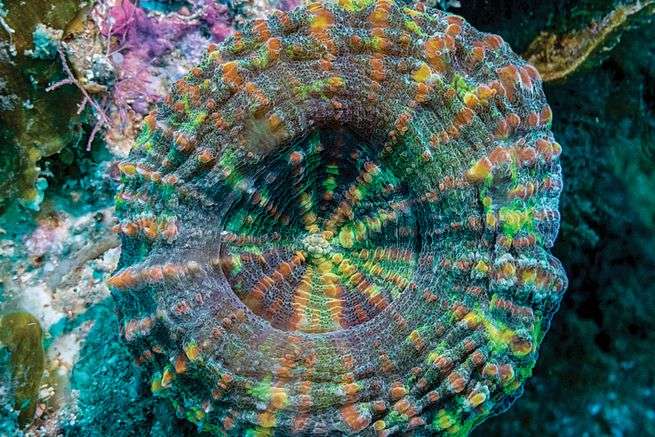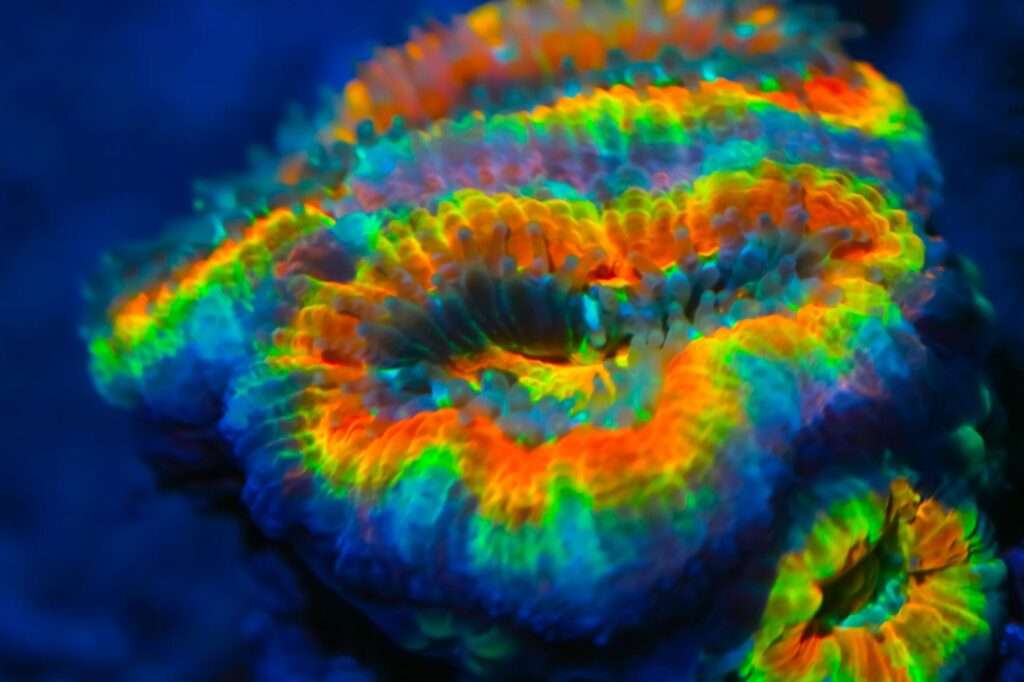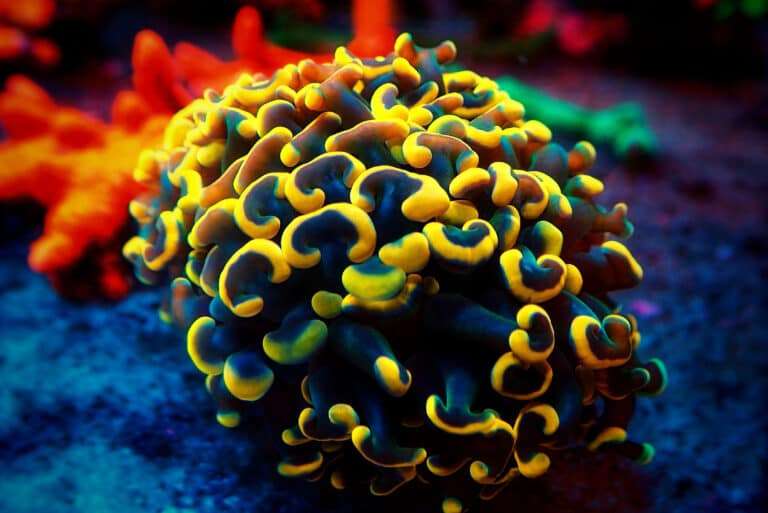
The Fungia genus’s Disk Corals are tough animals that can travel about the substrate with ease. They are lone, free-living corals that travel by current and water to go where they need to go. Actually, they can migrate up to 12″ per day (30 cm). Additionally, they are known to climb upward at an inclination of up to 30 degrees and can right themselves when they fall over.
The Disk Coral Fungia spp. are primarily spherical, as the name suggests, with the occasional specimen being elongated. They can be dented and have a variety of shapes, including dome and saucer-like forms.
Habitat
Lamarck introduced the Fungia genus in 1801. There are roughly 65 nominal species, 32 actual species, and 15 of them can be found in Australia. In captivity, the Fungia genus has been reproduced.
They can be discovered on soft ground or rubble in places that are shielded from powerful water currents. Although the majority of them are found in considerably shallower waters to depths of 82 feet, they can be found at depths ranging from 0 to 131 feet (0 to 40 m) (25 m). They have the capacity to “unbury” themselves from the substrate when it becomes covered with sediment. If they are flipped over, they have the ability to right themselves. This is accomplished by allowing their tissue to absorb a significant amount of water, making them buoyant, and then using the water current as their means of propulsion.
Morphology
Its disc Coral, Fungia sp. is a free-living, highly mobile organism. They will move by expanding their tissue and moving with current. They have dented or extended saucer to dome forms. All fungia species have broad, slit-like mouths that frequently include different parasites. They may have one mouth or several mouths, all of which feature lengthy septa that radiate outward from the centre to the end. Compared to the major ones, some septa begin further back and are smaller. In the wild, fungia spp. small, tapered tentacles retract throughout the day and emerge only at night. They typically remain partially extended over the day in the aquarium, though they will immediately retract if disturbed.
The blade-like septal teeth that project from the centre are surrounded by these tentacles. The Fungia spp. have a stem that connects them to rock work while they are young. As the coral grows over time, the stalk progressively degrades and breaks, leaving a scar in the centre. After that, the scar gradually heals. Due to its many color options, the Disk Coral is a striking addition to your show. The Fungia genus can be found in any color, however they are typically green or purple. Here are some of the more popular Fungia species described:
- F. distorta: The skeleton of the mushroom-shaped stony coral is divided into what resembles flower petals.
- F. fungites: The Common Mushroom Coral is dark or mottled and features triangular septal teeth, which are long, thin bones that cross the top of the fungia. This species can grow as large as 11 “(28 cm), making it a resident of shallower waters.
- F. echinata: The rough feather coral may grow to a maximum size of 39 feet “(100 cm)! They have a length to width ratio of 3 to 1 or 3 to 1.5, which is slightly elongated. This fungus lives in deeper water.
- F. scutaria: The oval mushroom coral, also known as the disc coral, has lengthy tentacles and can withstand temperatures as high as 83 F (74 F), which is a little higher than that of other fungi-like organisms. They are tiny, only growing to a height of about 7 ” (17 cm).
- F. simplex: The ridge that runs down the centre of this lengthy fungus is home to many mouths that belong to the Tongue coral.
In Captivity

- Feeding
The Fungia corals have evolved a variety of feeding techniques. Many of its nutrients are obtained through a symbiotic interaction with a sea algae called zooxanthellae. They can also take in dissolved organic substances and planktonic creatures as well as food particles from the water column. These corals require at least daily feedings when kept in captivity. Additionally, they require more frequent feedings in low-light situations.
- Social Interactions and Compatibility
Fungia coral gets along well with practically all other genera and species in the Faviidae family. But it has the potential to attack other corals and use their mucous nets as a means of necrotizing them. Put your coral somewhere it can’t “walk” up to another substrate dweller that isn’t a Fungiidae family member.
Table





